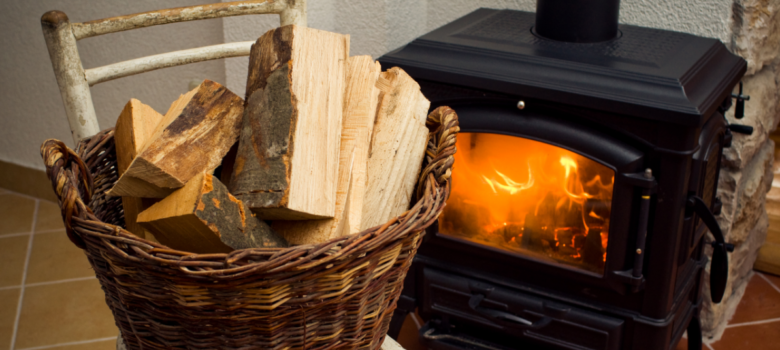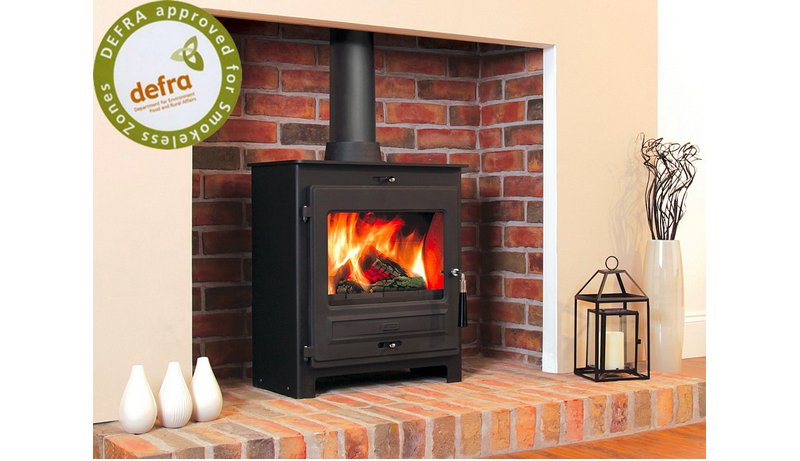
Wood burning stoves seem incredibly popular at the moment, with more and more homeowners making the switch – but why is their suddenly so much interest in them?
Well once you get them installed, if you can source the wood yourself then you have a free heating source in your home. Even if you have to buy in the fuel they are still relatively cheap to operate – the table below compares a wood-burning stove with the other more common heating systems.
| Cheaper to run per kilowatt hour (kWh) | Other systems | |
| Wood burning stove | 77% | Electric fire |
| 29% | Gas fire | |
| 43% | Oil fire | |
| 50% | LPG fire |
Remember we are not talking about biomass boilers here – these wood burning stoves on the whole just produce heat, they can’t help with the hot water and as such are primarily used as a supplementary heating system rather than one to replace your primary heating system altogether. Table 2: Comparison between wood burning stove and other heating systems according to the Stove Industry Alliance (SIA) (Which, n.d.)
In terms of energy savings wood burners are also pretty eco-friendly. Obviously produces CO2 when it is burned, however the CO2 released was actually captured by the tree as it grew – so it can be viewed as a carbon neutral process provided the trees that get burnt are replaced with new trees. Compare this with gas and coal, which have taken millions of years to form – the CO2 released when these burn is added to the air.
How much does a wood burning stove cost to buy?
The price of a wood burner starts at about £500, however the price can quickly escalate depending on whether you need a new chimney flue and also if you are looking to produce a slightly more intricate fire surround with a mantle and hearth. Therefore the cost of buying a wood burner and getting it correctly installed could easily be in excess of £2000. If you do require a new flue, please ensure that it gets installed to meet the necessary regulations – you can learn more about the regulations by clicking on the link below:
>>> Guidance on Flues and Chimneys <<<
If you need to find a Heatas approved installer you can click here
What fuels can be used in a wood burner?
In theory there are several kinds of fuels that can be burned to a stove such as chips, logs, pellets and smokeless fuels. Some areas in the UK are known as smoke control areas – these are places where you aren’t allow to emit smoke from a chimney unless you are burning authorised fuel or using exempt appliances. The authorised fuel includes any of the following smokeless fuels:
- anthracite
- semi-anthracite
- gas
- low volatile steam coal
So if you are based in London for example (a smoke control area) and want to burn ordinary logs, you will have to buy an exempt appliance – this is namely a wood burner that is DEFRA approved.
If you are therefore looking to buy a new wood burner and want the ability to be able to burn any wood in it, we would always recommend buying a DEFRA approved wood burner for smokeless zones.
Water is the enemy!
One of the most important things to bear in mind when burning wood in your wood burner is to make sure it is dry. A freshly chopped tree will contain over 50% water – so trying to burn this will cause lots of different issues including difficulty in lighting the fire itself, low heat output from the logs and lots of smoke – it can also lead to rapid creosote buildup in the chimney flue which means more frequent chimney cleaning is required.

Hardwoods, such as oak or ash, are more efficient and economic than softwoods, such as pine or fir, as they burn for far longer which means that you don’t need as many logs – although they do tend to be more expensive to buy in the first instance.
How much does wood burner fuel cost?
If you are looking to buy the wood or anthracite for your wood burner you should expect to pay £5-7 for a 25kg net of Ash kiln dried logs. If you are buying in bulk then this price will come down considerably and also if you can pick up the logs directly from the distributor then again that will be far cheaper as palette delivery is expensive. A 25kg should last a few days if you are just lighting the stove fan in the evenings. Obviously if you are shoveling in the wood and keeping the stove on all day then the wood will be used much quicker.
If you decide to opt for the anthracite then you should expect to pay twice the price of the wood, so £10 – 15 per 25kg bag. This will last longer than the wood though, so comparing the two in terms of cost and heat produced from a 25kg bag they are about even.
The running costs of a wood burning stove are therefore pretty good especially if you spend lots of time in the room with the heater as hopefully it means you can avoid putting your central heating on altogether. The cost of installing the stove might be prohibitively expensive for some and unfortunately there is no Government help currently available to help cover some of the install cost – having said that, if you can source the wood for free (from a local farm for instance) then you can heat much of your home for free. We really do recommend getting the DEFRA approved stove though since this means you can burn whatever fuel you can get your hands on!













Great post, very good information!
I’ll certainly add DEFRA to my list of things to look out for when buying my new stove.